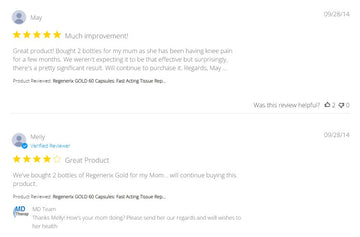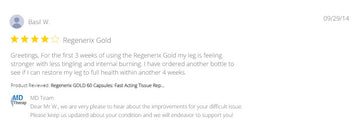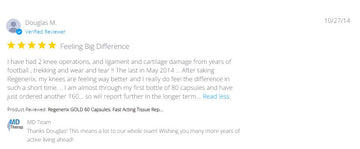Scalene Stretch: Create Space in the Neck, Ease Shoulder Tension & Nerve Irritation
by MD therapeutics on Aug 17, 2025
Why the scalene stretch helps (the principles)
-
De-loads a chronically overworked trio: The anterior, middle, and posterior scalenes elevate the first two ribs and side-bend the neck. Tech posture, stress, and mouth breathing keep them short; gentle lengthening reduces cervical facet compression and first-rib “tug.”
-
More room for nerves & vessels: Easing tone around the interscalene space can reduce mechanical irritation on the brachial plexus—often felt as shoulder/arm heaviness or tingling during desk work or overhead tasks.
-
Restores smooth neck mechanics: Small, pain-free side-bend/rotate combos reintroduce motion without cranking joints—useful for neck ache, some headache patterns, and postural shoulder pain.
-
Breath-led down-regulation: Slow nasal exhales reduce guarding so the stretch “sticks.”
How to do it (precise, range-aware)
Anchor first: Sit tall. To stretch the right side, gently depress the right shoulder by holding the seat edge (or let the arm hang with a light weight).
Base move (for all scalenes):
-
Glide head away (left side-bend) until a mild stretch (2–3/10) appears along the right side of the neck. Breathe.
Target each scalene with tiny head angles:
-
Anterior scalene (right): From the base, add a tiny extension and rotate nose right (toward the stretch side).
-
Middle scalene (right): Stay nose forward (neutral rotation), slight extension optional.
-
Posterior scalene (right): From the base, add a tiny flexion and rotate nose left (away).
Dose: 20–30 s × 2–3 holds/side, 1–2×/day.
Safety: No yanking. Stop if you feel dizziness, visual changes, strong tingling, or hand color change; those are “too much” signals. For known thoracic outlet syndrome, keep ranges micro and get clinician input.
Limits of exercise alone
-
Systemic drivers—sleep, stress, diet, and metabolic health—still sensitize neck/shoulder tissues.
-
Flares cap progress: People under-dose or stop when pain spikes.
-
Capacity gaps: Most need scapular strength (lower traps/serratus), thoracic mobility, breathing retraining, and workstation tweaks—stretching alone rarely fixes the pattern.
-
Tissue change is slow: Adaptation takes months; consistency + recovery + nutrition beats “stretching only.”
Why add nutritional correction
-
Improve circulation so post-session tissues receive oxygen and nutrients.
-
Promote repair by supplying matrix inputs (e.g., collagen peptides, hyaluronic acid) that your training helps “signal” into use.
-
Reduce excessive inflammation to keep day-to-day practice tolerable and consistent.
-
Avoid tissue damage by buffering oxidative and catabolic stress from repetitive loading.
Botanicals & nutrients often paired with neck/shoulder rehab
(Blends traditional lore with published research; evidence ranges from promising to mixed. Check interactions and personal suitability with your clinician.)
-
Ginger (Zingiber officinale): Ayurveda/East Asian traditions for circulation and “wind-damp” aches; standardized extracts show modest symptom support for some.
-
Turmeric / Curcumin (Curcuma longa): Longstanding Ayurvedic use; bioavailability-enhanced curcumin has reduced arthritis pain and improved function in multiple studies; culinary turmeric alone is low in curcumin.
-
Boswellia / Frankincense (Boswellia serrata): Ayurveda’s shallaki; standardized extracts have shown improvements in pain/function in osteoarthritis cohorts.
-
Winter Cherry / Ashwagandha (Withania somnifera): Adaptogen for resilience; trials suggest immunomodulatory effects and symptom support that may aid training tolerance.
-
Collagen Peptides (Type II focus): Provide peptides that may support cartilage/connective-tissue metabolism—useful with posture retraining and strengthening.
-
Hyaluronic Acid (oral): Contributes to joint lubrication/viscosity; used to support smooth motion and comfort.
-
Cat’s Claw (Uncaria spp.): Amazonian tradition for “rheumatism”; small trials show short-term pain improvements, though evidence remains limited.
The practicality problem
-
Food-only dosing is hard: Daily, research-like intakes of curcumin or ginger via meals are impractical.
-
Pill burden & cost add up: Buying six–seven separate products (ginger, turmeric, boswellia, ashwagandha, collagen, HA, cat’s claw) means many capsules and a higher monthly spend—vs. one comprehensive formula.
A convenient all-in-one option: Regenerix Gold™
Prefer scalene stretching + nutrition without juggling bottles?
-
What’s inside: Hydrolyzed Type II Collagen, Hyaluronic Acid, and a proprietary blend of Ginger, Turmeric, Frankincense (Boswellia), Cat’s Claw, and Winter Cherry (Ashwagandha)—the same seven ingredients discussed above—combined to promote healthy joint and muscle function and support everyday recovery.
-
Need only: 2–3 capsules daily.
-
Price: $98 a bottle.
-
Why it fits here: One formula covering seven evidence-linked ingredients is simpler—and typically more cost-effective—than buying 5–7 separate supplements.
-
Track record: Recommended by doctors and physical therapists internationally for about a decade (individual clinician views vary).
Supplements support healthy function; they don’t diagnose, treat, or cure disease. Check interactions (e.g., anticoagulants with turmeric/ginger/boswellia) and suitability with your clinician.
This week’s mini-plan
-
Daily: Scalene stretch 2–3×20–30 s/side (cycle anterior → middle → posterior angles).
-
3×/wk capacity work:
-
Chin tucks 2×10 (3–5 s holds),
-
Scapular retractions (band) 2–3×12–15,
-
Thoracic extensions (roller) 1–2×8–10.
-
-
Breathing check: Light, slow nasal breathing with low-rib expansion (less accessory neck muscle overuse).
-
If symptoms spike/tingle: Halve the hold time and range, or switch to micro-glides until discomfort settles within 24 h.



